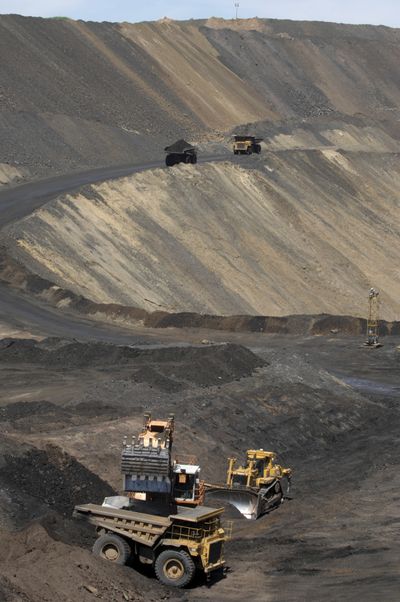Phosphate mine company will clean up waste to settle lawsuit

BOISE – A phosphate mining company has reached a toxic-waste cleanup agreement with the Environmental Protection Agency and the Shoshone-Bannock Tribes over mining waste in southeastern Idaho.
Officials with P4 Production LLC, a Monsanto subsidiary, said in a prepared statement Thursday that they worked with the tribes and EPA to develop the remediation plan for the Ballard Mine near Soda Springs.
“We fully support this plan and will continue to work collaboratively and transparently throughout this process,” the company wrote in an email to the Associated Press. “As members of the Soda Springs community, we have great respect for the people and the environment in this historic and beautiful area of Southeast Idaho.”
The cleanup agreement was filed in federal court this week. After a public comment period, it can go into effect. The agreement is expected to resolve lawsuits filed by the EPA and the Shoshone-Bannock Tribes over the waste left at the mining site.
Under the proposed agreement, P4 Production wouldn’t admit fault, but it would pay hundreds of thousands of dollars to the EPA, the tribes and other agencies to cover the costs of responding to toxic waste releases from the mining site. P4 Production would also have to make an additional $89 million available to the EPA as a guarantee that the cleanup work will be completed.
The proposed agreement states the cleanup work would include putting a cover on more than 500 acres of the site where waste was left behind, installing barriers to intercept and treat contaminated groundwater and building wetland treatment cells to clean up any contaminated seepage or springs.
Southeastern Idaho contains large phosphate deposits. There are several mines in the area that have operated by different companies over the last 100 years.
Investigations into the possibility that waste from the phosphate mines in the region could be hurting humans began in 1996, after several horses pastured in the area developed selenium poisoning and had to be put down. Environmental regulators began examining each of the mining sites to determine the impact of any waste.
Ultimately, the investigation found that the mines left dangerous contamination behind, including toxic substances such as selenium, arsenic, uranium, radium and radon. During the last century, those wastes have run into the region’s water sources, concentrated inside some of the plants in the area and exposed insects and amphibians through the waterways and sediment.
Some of the toxic waste can cause cancer or other illnesses in humans. Investigators found that Native Americans in the area were at risk of being exposed to the toxins at rates far higher than the maximum acceptable levels set by the federal government.
Seasonal ranchers were also deemed at increased risk because they may eat beef from cattle that grazed on plants and drank the water in the region. The investigation concluded that the area was safe for recreational campers and hikers, however, because they likely wouldn’t be exposed to dangerous amounts of the toxins.
The Shoshone-Bannock Tribes has worked with the EPA to monitor and respond to toxic releases from the Ballard Mine when they occur. The tribes contend in one of the lawsuits that they haven’t been fully reimbursed by P4 Production for that work, and they want a judge to order that they be compensated for past and future work at the site.